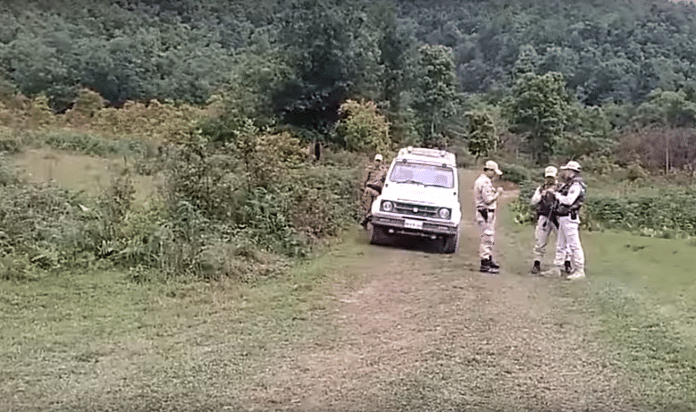Despite a policeman confessing that the killing of Ch Sanjit in Manipur was staged, the government may be trying to ensure the case dies a slow death.
It was a moment of dread for me when I heard Thounaojam Herojit, a head constable with the Manipur Police, admit that he had killed a person in cold blood. He wanted me to report his confession on one of the most controversial fake encounters perpetrated in the state so far—the BT flyover encounter in which Ch Sanjit was killed in cold blood.
Herojit told me in January 2016 that he had shot down an unarmed Sanjit on the orders of a senior officer.
This was a reporter’s dream come true, an opportunity to take on the government’s hounds who had 2,528 fake encounters under their belts. I knew then that I was putting my life and others’ lives at risk, including Herojit’s. I wrote the article with the hope that justice would be done to the victims of fake encounters.
After the news was printed on 26 January 2016, my publisher even suggested that I leave the country for some time to avoid facing reprisals, which could cost me dearly. I began to weigh the odds and concluded that if I die, it won’t be at any place where my body wouldn’t be found; that I would ‘exit the building’ having spent my last moments with my family.
Much water has passed under the Ithai barrage, and still the status quo remains. The judiciary of the state prefers not to accept Herojit’s confession. Despite the proverbial Pandora’s Box being opened, and a killer having confessed to the deed, the ongoing trial in the sessions court continues in its lethargic manner.
The BT flyover fake encounter occurred on 23 July 2009, and 11 cops were indicted in the CBI investigation. The chargesheet was submitted to the court that year, and still the case moves on at a snail’s pace. The court says Herojit cannot submit his confession because the trial is going on, and that the court is not an appellate one.
The mother of the fake encounter victim submitted a petition to the High Court of Manipur in 2016, pleading that action be directed as per the statements made by Herojit. She demanded that the senior officer, and other responsible authorities, be punished. The high court, in its basic observation of jurisprudence, stated that it could not accept the petition as the case was still being heard in a lower court.
Here lies the irony: the sessions court is trying to find out who Ch Sanjit’s killer is, while the killer has come out and confessed to his deed.
Nearly 400 witnesses have to be interviewed, and so far, 150 have been recorded over eight years. At this rate, it will take at least a quarter of a century for all witnesses to be examined by the court.
It appears that the government might be trying to ensure a slow death for the BT fake encounter case. At least that is how it seemed, until Herojit approached the Supreme Court on 8 January.
The Supreme Court’s directive to the CBI to investigate 92 cases of fake encounters was based on certain commissions of inquiry and National Human Rights Commission cases. The CBI’s homework of collecting documents, and other relevant material, had already been done by the commissions.
Finally, only 11 First Information Reports have been submitted to the Supreme Court by the CBI in January, and the names and cases have been kept confidential. Civil rights organisations in the state have cried foul at the CBI’s lethargic investigation.
Herojit’s affidavit stating that he was an eyewitness to several fake encounters, and was the killer of Ch Sanjit, has been accepted by the Supreme Court. The apex court also observed that Herojit’s statement may be recorded by any magistrate in Delhi. So, one can give up waiting for justice from the state; now all hope rests on the upcoming hearings in the Supreme Court.
Justice has been delayed for the victims of fake encounters. One hopes that justice is not denied, and there will finally be a res judicata for the victims of violence.
Chaoba Paojel is a journalist at the Imphal Free Press.






